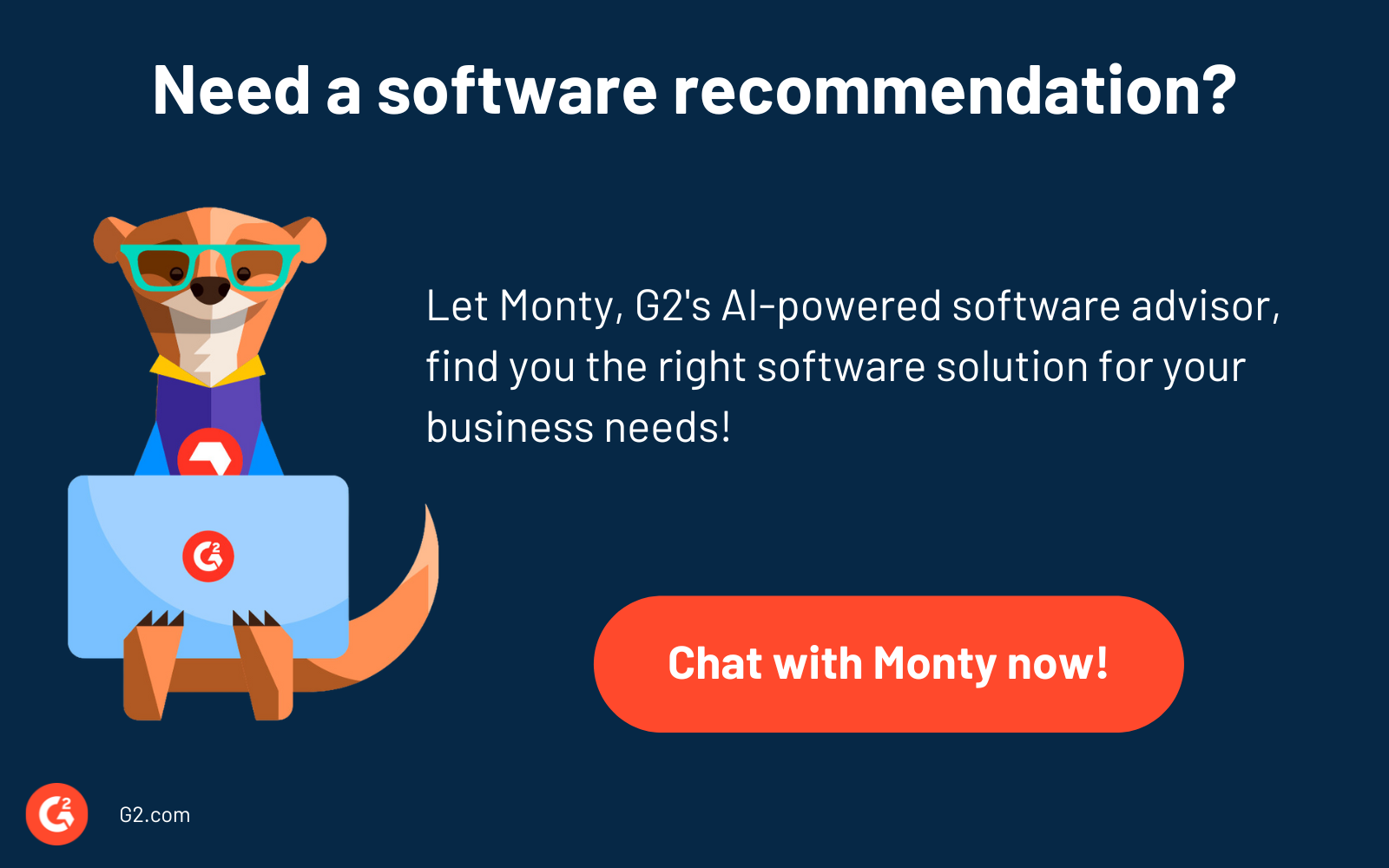Have you ever heard an employee call to confirm their schedule or find the time-off request form? These are common occurrences and highlight the issue of information inaccessibility in the workplace.
Employees shouldn't waste time navigating a maze of information. HR departments often have to answer the same questions regarding schedule, vacation time, payroll, and other policies. Wouldn’t it be great if these answers could all be found in one place?
Workforce management solutions centralize this information, empowering employees and streamlining HR processes.
What is workforce management?
Workforce management (WFM) is the art of managing an organization's staff to boost productivity. It involves forecasting labor requirements to quantify the number of employees needed to complete a task or job at any given hour, day, week, or month. WFM also manages employee schedules and performance, including time and attendance tracking.
Effective workforce management ensures that your office, no matter how big or what industry it works within, runs smoothly, that all of your employees have the right tools and resources they need, that everyone has access to the same information, and that your team is providing a positive customer experience.
When you can incorporate a system that does all of this for you, not only can it positively impact your bottom line, but it also helps the people who make it all happen. When work is streamlined and made easier for your employees, it can pay off in a big way.
Features of workforce management systems
Workforce management is all about getting the right people, with the right skills, in the right places at the right times. It can be applied to a wide range of employee programs. These systems usually apply to many aspects of HR administration and are used to streamline a variety of day-to-day tasks.
Workforce management covers a wide range of HR sectors and tasks while providing information and data in real-time. It's a big-picture approach that helps businesses optimize their workforce, reduce redundancies, resolve discrepancies, and save time.
Some common elements of WFM systems are:
- Onboarding: When a new employee is being onboarded, they can complete new hire paperwork and other onboarding tasks in one comprehensive system. This allows HR to automate and track the status of each item for better resource management.
- Labor budgeting: When you’re able to plan for new projects and assess the bandwidth of certain teams or specific employees, your organization can be sure it’s staffed properly to meet any demands while remaining on top of labor costs.
- Forecasting: A key feature in many workforce management systems is the ability to forecast labor demands, which can help reduce over- or understaffed workdays. This can prevent businesses from unnecessarily paying for overtime and improve your workforce planning strategy.
- Staff scheduling: A WFM system can be used to build schedules for employees who work hourly or part-time. It’s crucial that mistakes aren't made here, as they can lead to missed shifts, upset employees, and poor customer service.
- Time and attendance: WFM systems provide automated time tracking and attendance monitoring. Accurate timekeeping ensures employees are paid correctly and helps identify areas where scheduling might need adjustments.
- Employee portal: Many WFM products have built-in employee self-service portals where employees are able to log in and see when they’re scheduled to work, request time off, and clock in and out.
- Asset tracking: Does your business need to keep track of resources that move among departments or teams? Or what about other items, like vehicles or company cards? These can all be recorded in WFM software.
- Compensation and benefits: Payroll, compensation, and benefits are made easy because all employee’s work and direct deposit information are located in one central location.
- Employee performance management: WFM tools can help ensure that employee activities and outputs on specific projects and work assignments meet your company or organization's goals.
- Vacation and leave planning: WFM allows HR professionals and employees to collaborate to request and approve absences, vacations, and time off.
¿Quieres aprender más sobre Software de Gestión de Personal? Explora los productos de Gestión de la fuerza laboral.
How to create a workforce management strategy
WFM understands a company's needs by looking at historical data, like sales figures or customer call volume, to predict future workload. With a handle on upcoming demands, businesses can then forecast staffing needs. This may involve using software with machine learning to create schedules that match the predicted workload.
But in order to truly get the most out of this system, you’ll need to build a robust strategy behind it. Otherwise, you’ll struggle to achieve the level of productivity, cost-effectiveness, and flexibility needed to run a completely organized business.
Identify your goals
Before exploring specific functionalities, identify your key workforce management goals. Are you aiming to improve employee engagement, reduce labor costs, or streamline scheduling? A clear understanding of your goals will help guide your strategy and decisions about using the workforce management system.
Get your processes and policies in place
When it comes to elements of your business, like employee time and attendance, scheduling, and leave, if you want it all to run smoothly, you’ll need to standardize all of your rules and policies. Being as consistent and transparent as possible is crucial to it being applied fairly throughout your organization.
Automate attendance tracking
In certain industries, like call centers, retail, and entertainment, keeping attendance and knowing how many people on your staff are set to come into work can make or break the workday.
Plus, you never want your managers to spend countless hours procuring over a timesheet when there are more important tasks to be done. With so much technology at our fingertips, it doesn’t make sense not to take the time to automate how you track time and attendance. When you do, your HR and finance departments have more time to manage their team in a productive manner. This will also improve data accuracy and reduce payroll errors.
Regulate scheduling
Having one too many employees on a shift can affect a company's profit or loss. To truly optimize cost-revenue ratios, you’ll need to automate scheduling and eliminate old-school time clocks. Workforce management software can help supervisors and managers forecast their labor demands, making this easier than ever.
Communication and feedback
A successful strategy goes beyond just implementing the software. Develop a plan for communicating the workforce management system to employees and addressing their concerns. Regularly gather feedback to ensure the system is being used effectively and meeting the needs of both the organization and the workforce.
Benefits of incorporating workforce management tools
Clearly, WFM tools offer a wide variety of features and use cases, but you may be unsure of why you should be utilizing these tools at your business.
When you take full advantage of everything that a WFM tool can do, rather than rely on timesheets and other out-of-date procedures, some benefits you’ll start to notice are:
- Enhanced visibility: WFM tools put everything in one place, regardless of what resource or process you’re interested in checking.
- State-of-the-art automation: Say goodbye to manually updating a long list of documents, as workforce management software can automate processes for you.
- Error-free scheduling: Since the bulk of WFM features are centered around scheduling, you can rely on the algorithms to save you time and resources while eliminating any worry about being understaffed.
- Real-time evaluation: With workforce management tools, you won’t have to wait until the end of the quarter, half, or fiscal year to evaluate your employees' performance. You’ll be able to monitor their performance with real-time reporting, so nothing will come as a surprise.
- Better employee engagement: When you’re looking to improve employee morale and boost engagement, workforce management can help by increasing transparency across all departments and processes. Doing so can also result in better customer satisfaction and a boost in customer service.
- Reduce non-compliance risks: This is a huge benefit if you work at a larger organization, as you must comply with not only local ordinances and union rules but also individual employment contracts and company policies. Any gap in compliance can result in an expensive fee and other associated costs.
Challenges of workforce management solutions
Even though workforce management solutions can streamline many HR tasks, there are still challenges to consider. Here are some of the common ones:
- Finding the right fit: Workforce management software comes with a variety of features. Picking the one that aligns with your specific needs and company size can be tricky. There can also be a cost factor to consider - finding a solution that meets your budget while offering the functionalities you need can be a balancing act.
- Data integration: Workforce management systems often need to integrate with other HR systems, such as payroll or timekeeping. This can be complex, especially if the existing systems are outdated or use different formats.
- Employee adoption: New software can be disruptive. Getting employees on board with a new workforce management system requires proper training and addressing any concerns they might have about privacy or additional workload.
- Scheduling complexity: Creating work schedules that take into account employee preferences, skills, and business needs can be a challenge, especially for businesses with hourly workers or multiple locations. Workforce management software can help automate this process, but it still needs to be configured effectively to avoid conflicts and ensure proper staffing levels.
- Staying compliant: Labor laws and regulations can be complicated. Workforce management solutions can help with compliance, but it's important to ensure the system is set up to adhere to relevant guidelines and update them as regulations change.
Best workforce management software
Those interested in workforce management software are looking for an application that can help their business plan, manage, and track employee work, including labor requirements, employee schedules, and paid time off (PT0). WFM software is often used to forecast labor demand, create and assign employee schedules, track attendance, and report on efficiency.
To be included in this category, a product must:
- Track employee attendance and workforce competencies.
- Allow HR professionals the ability to forecast labor demands and develop contingency plans.
- Manage employee schedules, leave requests, and PTO.
- Enable reporting on labor activities and workforce analytics.
* Below are the top five leading workforce management software solutions from G2’s Spring 2024 Grid® Report. Some reviews may be edited for clarity.
1. BambooHR
If your small or medium business has outgrown using spreadsheets, then look to BambooHR. This cloud-based application allows HR professionals to track and manage all essential employee information in a personalized Human Resources Information System (HRIS).
What users like best:
“The best part about BambooHR for me is the ease of use as a new HR professional, in a solo HR department. Everything is in one place, works together, and makes it super easy for employees and myself to use. On top of that, it's extremely customizable and easy to implement. Anytime I've needed help, we've gotten a response right away. I know who my sales rep is for upgrades and integrations, and I can always reach out to her and know I'll get an accurate answer quickly."
- BambooHR Review, Tyler T.
What users dislike:
"It is lacking a great deal of robust heavy-duty features from what I can tell. For instance, it could use features to allow for 1:1 notes and progress tracking. OKR inputs and metrics are lacking. Integrations are lacking."
- BambooHR Review, Kurt A.
2. Rippling
Rippling is a cloud-based workforce management platform designed to streamline your HR, IT, and finance departments. It offers one central hub to manage everything related to your employees, from onboarding to offboarding and everything in between.
What users like best:
“My employees love the tool and tout the ease of onboarding, expense submission, and HR compliance tasks. As a business owner, I appreciate having an HRIS system that is really focused on what matters without having complex interfaces and multiple steps to perform simple tasks. I'm in the system multiple times per week and I need simple! Keep doing great things."
- Rippling Review, Jonathan W.
What users dislike:
“Some of the base functionality requires additional time and effort on a case-by-case basis, like organizational charts that require a lot of advance planning in filters to show subsets of the company (and even with filters don't create a file that can be manipulated to show alternative organizational structures).”
- Rippling Review, Patrick D.
3. HROne
HROne is a comprehensive workforce management solution designed to empower businesses of all sizes to optimize their HR operations. Boost efficiency, reduce costs, and improve employee satisfaction with HROne's suite of features like automated scheduling, time tracking, and more.
What users like best:
"HRone has helped our organization in solving our major problems like workforce, attendance, and payroll management. The software is very easy to use, and the best part is the mobile app, which can be accessed on the go. The implementation team provided to us was very knowledgeable and supportive. Our employees use the mobile app every day to use features like marking attendance, leave application, reading HR policies, etc. The software provides an easy integration with the biometric device for attendance tracking."
- HROne Review, Rupesh K.
What users dislike:
"While the mobile app is convenient for quick access, some additional features available on the desktop version are not fully integrated, leading to a somewhat limited functionality on mobile devices."
- HROne Review, Tabassum A.
4. Keka
Keka is your one-stop shop for smarter workforce management. Automate scheduling, simplify time tracking with mobile apps, and empower employees with self-service tools. Gain valuable insights to optimize staffing, ensure compliance, and improve communication.
What users like best:
"Keka is very helpful for tracking all my leaves and attendance, helping in payroll, and remembering the birthdays/anniversaries of employees. It is very simple for daily and frequent use as its UI is very simple. It helps to apply leaves easily and makes tracking easy. It also helps me to track day-to-day activity. Keka also provides easy access from anywhere with an internet connection, enabling remote work flexibility and eliminating the need for on-premises software installation."
- Keka Review, Carla M.
What users dislike:
"Some features are not working properly on a regular basis, like the Apply for Work From Home feature, which sometimes does not take the expected date we want to apply for. The customer support is also not reachable."
- Keka Review, Neeraj G.
5. greytHR
greytHR is designed to streamline people management processes. It offers a comprehensive suite of features to automate core HR functions, payroll processing, and employee self-service, all in one user-friendly platform.
What users like best:
“As an employee using Greythr, I've found the platform to be a game-changer in HR management. The user-friendly interface simplifies tasks like leave requests and accessing pay details. The real-time updates on leave status ensure transparency, while the mobile app allows flexibility on the go. Greythr's responsive customer service adds to the overall positive experience. In essence, Greythr has made HR processes seamless, enhancing efficiency and user satisfaction. Highly recommended for organizations prioritizing modern, efficient HR solutions"
- greytHR Review, jahnavi T.
What users dislike:
“The features provided are somewhat limited and lack a modern look and feel compared to the newer solutions. The product looks less engaging and lacks in-depth customizations for target-setting."
- greytHR Review, Abhay Singh R.
A better place to work
Whether you run a multi-million dollar operation or a small retail store, every business can benefit from implementing workforce management. When you streamline management’s workload while also providing more transparency to the entire team around scheduling, everyone wins – including your customers.
Enhance your workforce management efforts by learning how to build strong employee relations.
This article was originally published in 2020. It has been updated with new information.

Mara Calvello
Mara Calvello is a Content and Communications Manager at G2. She received her Bachelor of Arts degree from Elmhurst College (now Elmhurst University). Mara writes customer marketing content, while also focusing on social media and communications for G2. She previously wrote content to support our G2 Tea newsletter, as well as categories on artificial intelligence, natural language understanding (NLU), AI code generation, synthetic data, and more. In her spare time, she's out exploring with her rescue dog Zeke or enjoying a good book.


